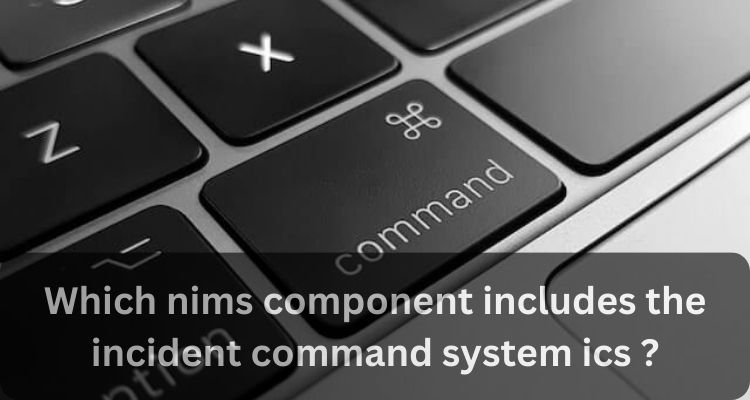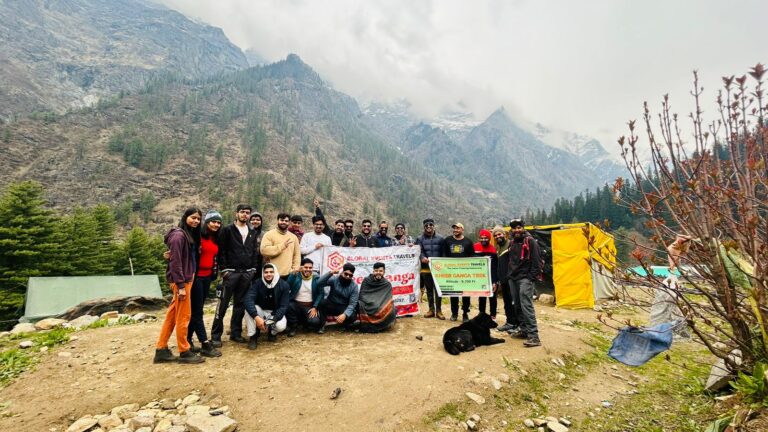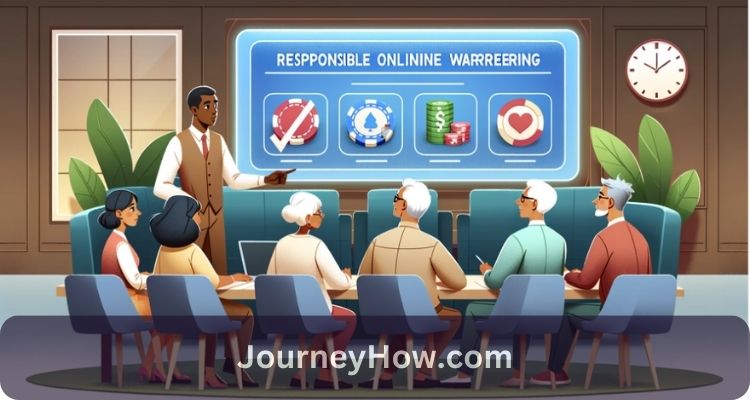Incident Command System (ICS) provide a standardized framework that promotes coordination across disciplines. Furthermore, these two systems define standard mechanisms and establish resource management processes to identify requirements, order or acquire materials; mobilize; track reports; recover/demobilize/reimburse resources as required.
NIMS relies heavily on Incident Command System (ICS). It offers a flexible management structure to address incidents of any size or complexity. In this article, we will discuss about “which nims component includes the incident command system ics?”
Planning
Each incident utilizes an Incident Command System (ICS). Standardized roles and reporting relationships help reduce confusion and increase efficiency, while its five functional areas for managing highway incidents: command, operations, planning, logistics and finance/administration can expand or contract depending upon incident complexity or as functional responsibilities become delegated; its modular organization also facilitates top-down expansion when appropriate and span-of-control recommendations ensure its organizational structure does not become excessively large.
At the outset of an incident, an Incident Commander (IC) determines which agency is responsible for each response activity and communicates this to resources on scene before setting up an initial Incident Command Post (ICP), identifiable with distinctive lighting, signs or flags. Vehicles of this kind should also be placed nearby so resources can be easily moved into it as needed. When new responders arrive, an IC will order them into its ICP and assign them their appropriate roles within ICS.
Once an Incident Commander (IC) assigns roles and defines an ICP, an Interagency Operating Plan (IAP) should be created. An IAP details incident objectives, operations tactics, resource assignments to meet those objectives as well as any necessary resolution plans that need to be established under Unified Command (UC) before beginning an incident response plan. Generally an oral or written IAP may be prepared but often times an incident response team will conduct pre-incident meetings which result in written IAP documents being produced during these pre-incident meetings resulting in written plans being produced prior to being launched in their official capacity.
At all times, an accurate inventory of available resources must be kept current, providing an accurate picture of who and what are in use or available for assignment. This information helps guide decisions, prioritize resources and allocate them according to need.
At smaller incidents such as dumpster fires, one person can fulfill the Incident Commander (IC) role. When an incident becomes larger and requires multiple officers’ efforts, an IC may delegate some responsibilities while still remaining accountable for overall incident management. For more complex events requiring multiple commands simultaneously or designated facilities are identified and designated to carry out specific tasks.
Preparedness
Successful incident management processes involve advance planning, resource allocation and communication and information management. While transportation agencies may have experience in these areas, many highway stakeholders may be unfamiliar with all three components. National Incident Management System (NIMS) provides a standard structure and terminology for responding to highway incidents; using Incident Command System will help minimize issues like extended response times, secondary incidents due to ineffective resource allocation or prolonged response times when responding.
ICS provides procedures for selecting and creating temporary management hierarchies to oversee funds, personnel, facilities, equipment and communications at one incident scene. This system allows a range of agency representatives from diverse types and sizes of organizations to easily come together into one cohesive management structure within an expeditious timeframe, no matter their organization type or size. The Incident Command System (ICS) organizational structure evolves progressively as incident needs shift and new functional responsibilities are assigned. Typically, an incident commander (IC) will assign each new ICS element (e.g., sections/groups or divisions) a leader via incident commander or department director appointments. This leader then takes on operational tasks and management responsibilities for their newly created section based on span-of-control guidelines; so that ICS structures don’t grow larger than necessary during incidents.
Initial Incident Command Post (ICP) should be established at an area on the incident site that is free from hazards, identified with lighting, signs, or flags and communicated to all responders preferably prior to arrival at scene. It will serve as operational headquarters during an incident.
Based on the characteristics of an incident, the Incident Commander may create an IAP as part of its response plan. This detailed planning document identifies incident objectives and strategies to attain them as well as associated operations tactics to implement each plan. For large scale or complex highway incidents a formal IAP may be developed under Uniformed Coordinated Coordinates; its purpose being to guide coordination and response activities between all transportation agency resources involved. An appointed Planning Section Chief may supervise this process from its inception.
Response
Incident Command System (ICS) is an on-scene emergency management organization designed to efficiently allocate and distribute resources during incident response. Although often employed by both public and private agencies, ICS should be seen as part of a larger incident management process that encompasses advance planning activities as well as resource management processes throughout an incident’s life cycle. FEMA website offers various resources and courses that assist jurisdictions and emergency responder organizations as they adopt National Incident Management System (NIMS), applying its components like Incident Command System to their highway incident responses.
ICS provides an essential structure that allows agencies to work together during highway incidents using standard operating procedures for personnel, facilities, equipment and communications management. Although traditionally utilized by fire services and law enforcement personnel, transportation stakeholders play a significant role in supporting this system during traffic incidents.
Highway incidents are unpredictable events with unique working scenarios each time they arise, making ICS the perfect framework to support daily highway incident management. Standardizing on-scene management with ICS helps eliminate ambiguity in communication, facilitate resource coordination and create situational awareness.
Organizationally, ICS utilizes a modular design that enables its teams to adapt as the incident complexity changes. The structure encompasses five functional areas – command, operations, logistics planning and administration. Each functional area has a designated lead called an Incident Commander/Unit Chief or Branch Director as well as sections or divisions and groups which serve to organize response teams into geographic or operational regions respectively. An Incident Commander/UCardinale or Branch Director may supervise any combination of divisions or groups under his or her purview.
Though Incident Command System (ICS) provides essential on-scene incident management support, its implementation can be challenging for transportation stakeholders who are unfamiliar with its structure. As a result, some transportation agency leaders hesitate to embrace its use despite its potential benefits: It could help mitigate some recurring highway incidents issues like longer response times and uncoordinated resources by using this methodology more frequently.
Recovery
At every highway incident, an Incident Command System organizational structure should not be implemented rigidly and immediately; rather, its flexibility allows it to adapt and meet changing needs over time. As an incident grows larger and more complex, Incident Command may delegate management of functional area units per span-of-control guidelines to other teams as required; all five NIMS functions including command, operations, planning logistics finance/administration are implemented with leaders for any newly created functional areas appointed as needed.
An essential aspect of resource management is creating an accurate and up-to-date picture of personnel, teams, equipment, supplies and facilities available or potentially available for tactical operations. An incident commander, logistical unit chief or planning section chief typically oversees this function and creates an Incident Action Plan (IAP) as a way of managing on-scene response efforts.
IAP typically entails the identification and location of facilities to meet various needs at the incident site. A temporary Incident Command Post (ICP) should be set up near where an incident has taken place and distinguishable by some means such as flag, light or sign. Other facility requirements might include mass casualty triage areas, point-of-distribution sites and staging areas.
To facilitate inventory control and enhance interoperability, all resources are identified with a unique name and function or capability “type”, according to the NIMS national typing protocol as shown in Exhibit 4-6. This standard terminology helps responders communicate when requesting services from another agency and also creates consistency when assigning personnel to operational areas within ICS. Credentialing responders as part of this process ensures those possessing appropriate skills levels are assigned accordingly.
Highway incidents frequently require cooperation among public safety agencies and non-public-safety entities, making ICS an invaluable asset in orchestrating a coordinated response among multiple entities involved. In such situations, its utility lies in orchestrating response efforts of different organizations involved so that responses are both coordinated and effective. To know more about “which nims component includes the incident command system ics? ” just follow us: journeyhow.com


























+ There are no comments
Add yours